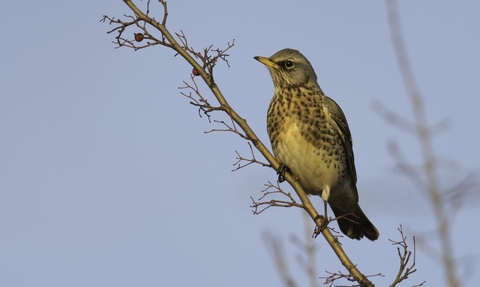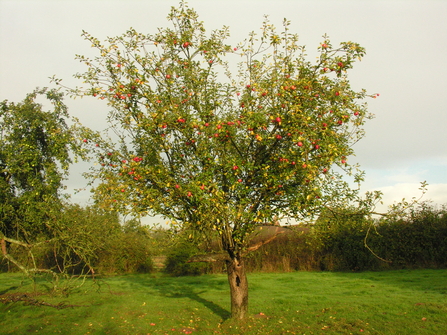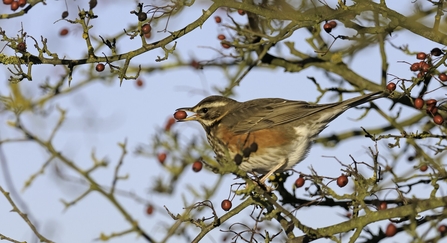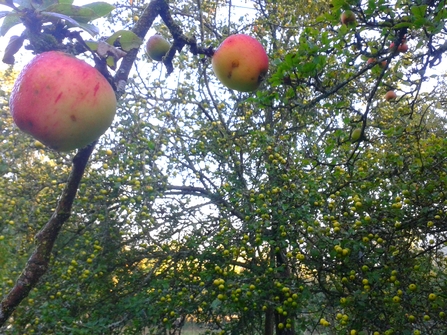
Fieldfare (Turdus pilaris) feeding on berries in hawthorn hedge in Cambridgeshire. January 2012. - Chris Gomersall/2020VISION
Where to see fieldfares and redwings
Autumn welcomes the arrival of fieldfares and redwings, noisy and gregarious birds often seen feasting in our orchards. They gather along the coasts of Scandinavia and northern Europe as the days shorten to begin their long and risky flight to the UK to over-winter here. Fieldfares and redwings start arriving in early October and nearly all will have left by late April.
They are very social birds, spending the winter in flocks of anything from a dozen or two to several hundred strong, moving from orchard to orchard across the countryside.
Bodenham Lake
The orchards at Bodenham Lake sound to the fieldfares’ throaty ` chak-chak-ak` chattering and the thin `tseeep` of redwings in autumn, as flocks feed on the windfalls. Both orchards have been cultivated since the 1700s and are stocked with cider and desert apples, much loved by these members of the thrush family. They also visit nearby hedges stocked with hawthorn berries, rose hips and holly berries.

Windfall apples (c) Jim Higham
The Sturts
The centuries old, thick hedges on the three reserves that comprise the Sturts attract redwings and fieldfares with the orchard of The Sturts North a popular feeding station. Often seen together, the easiest way to tell them apart is if you see a flock in flight – fieldfares have white flashes under their wings (their armpits) and redwings, as you'd expect, have red armpits. Resembling thrushes with a speckled breast, fieldfares are the larger of the two while the redwing has a strong white stripe over the eye.

Orchard at Sturts North
Pool Ellocks
The attractive orchard on the steep, sheltered slope at Pool Ellocks near Goodrich has been here since 1890 and no doubt fieldfares and redwings have been enjoying the windfalls ever since. There are heritage varieties of cider apples and perry pears, some recently planted to replace older trees. The thickets of raspberry and bramble provide additional food as well as a place to roost at night.

Redwing (Turdus iliacus) feeding on hawthorn berries (c) Chris Gomersall/2020VISION
Hampton Park Road Meadow
On the outskirts of Hereford, the orchard is an excellent place to see fieldfares and redwings at first hand feeding on the windfalls from the mixture of recently planted fruit trees as well as mature and over mature dessert and cider apple trees. The older trees support a good diversity of wildlife, including invertebrates, roosting sites for bats, the growth of parasitic mistletoe as well as food for fieldfares and redwings.

Fieldfare (c) Dave Appleton
Common Hill
Up on a ridge above Fownhope, the apple orchard in Common Hill nature reserve has a collection of old fruit trees as well as hedgerows laden with berries and fruit of holly, bramble and both white and black byrony. The fieldfares and redwings are joined by chaffinches and thrushes with tawny owls making an appearance.

Common Hill orchard
